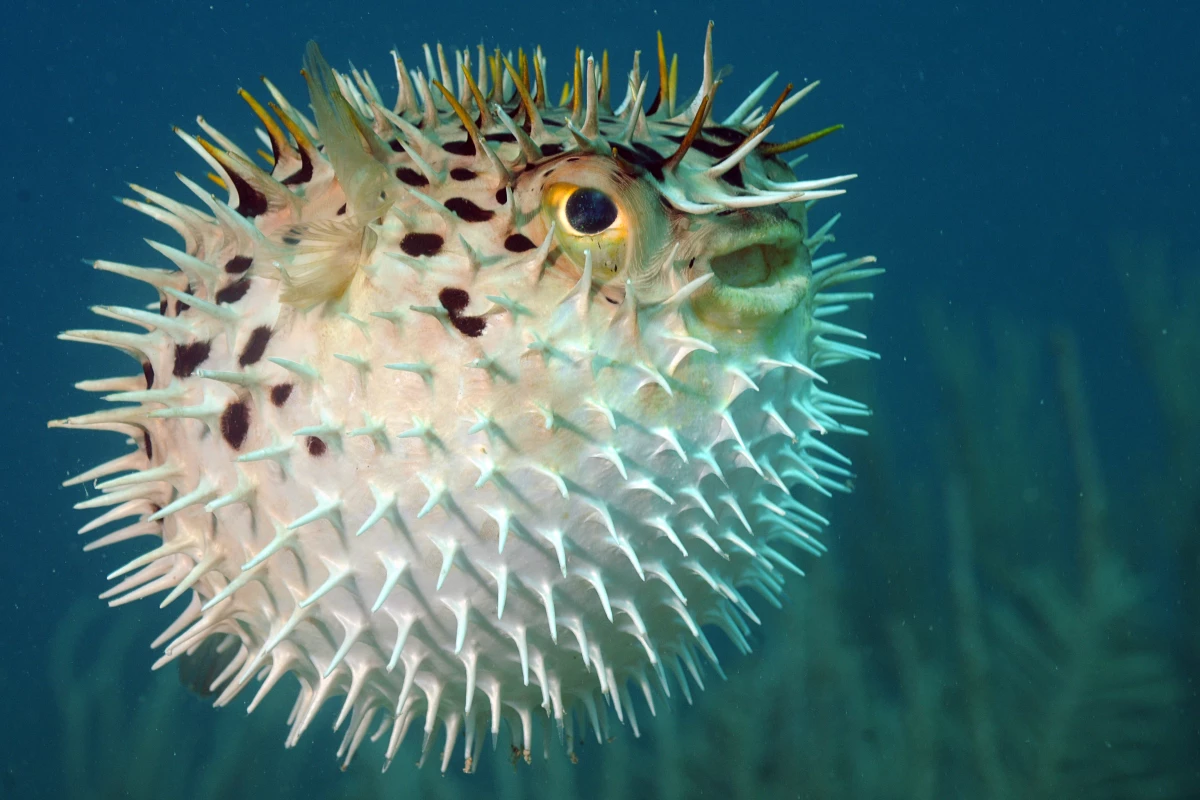Although the porcupinefish's spiky skin does offer protection against predators, it doesn't repel water. Nonetheless, scientists have now copied its structure to create a water-repellent material that's more robust than previous efforts.
Many of the "superhydrophobic" materials that we've seen before incorporate a coating of tiny needle-like structures that stick out vertically from their surface. These keep water droplets from making their way down to that surface, holding them up above a layer of air, so that they end up just rolling off.
Unfortunately, though, these micro-needles are often quite fragile. As a result, they can get broken off when the material is bent or twisted, or when it's scraped along a hard surface. The larger needles on a porcupinefish, however, are quite pliable, and thus aren't as easily damaged.
With that in mind, researchers from Japan's National Institute for Materials Science set about replicating them on a much smaller scale. They started by making tiny spikes out of zinc oxide, but then added a silicone polymer to boost elasticity.
The resulting material consists of a matrix of the elastic needles – it doesn't just have a surface coating of them – and it's highly hydrophobic (water-repellent). Additionally, though, it maintains that quality even after being bent and abraded over 1,000 times, and after bits of it have been sliced off.
What's more, because the material is very spongy and flexible, it's claimed to also offer protection against impacts and deformation. The scientists suggest that it could either be applied as a coating to other materials, or moulded to create objects that are hydrophobic all the way through.
A paper on the research, which was led by Yoshihiro Yamauchi and Masanobu Naito, was recently published in the journal ACS Applied Materials and Interfaces.
Source: American Chemical Society




